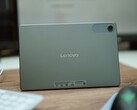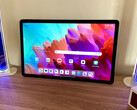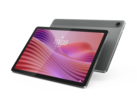
Lenovo Tab review – 10-inch tablet as an affordable alternative for school, college, and the living room
Slim bezels, low price.
The Lenovo Tab is a compact and affordable tablet that aims to impress with a high display resolution, robust metal case, and stereo speakers. It can be used for school, college, or entertainment. We find out in our test whether the Lenovo Tab is worth a purchase.Florian Schmitt, 👁 Florian Schmitt (translated by Mark Riege) Published 🇩🇪 🇫🇷 ...
Verdict on the Lenovo Tab
The Lenovo Tab mainly impresses with its great display: For its price class, it offers a high resolution and high contrast with its low black value. It is also free from PWM flickering and even reaches a fairly high color accuracy. It only isn't very comfortable to use outdoors, since the maximum brightness around 430 cd/m² is too low for that.
We also like the stereo speakers with their well-rounded sound and the capability of locating the tablet via satellite – even it isn't always 100% accurate. The metal case shows high-quality workmanship, although it doesn't really protect the display from pressure very much.
At a price around 150 Euros (~$157), you cannot expect a lot of power, and some of the competitors still offer slightly more here. You also shouldn't depend on a lot of security, since the period of software updates is unsure. Another negative point is the slightly smaller battery: although it still offers an acceptable battery life, you get more endurance with other tablets in this price range.
If you can live with these restrictions, you have an elegant tablet with a good display and decent speakers at an affordable price here.
Pros
Cons
Price and Availability
Although the Lenovo Tab (TB311FU) isn't available in the US at the time of the test, it is announced for many global markets in Europe, Asia, Central and South America, and Africa. For example, the tablet with 64 GB of storage is available directly from Lenovo in the UK for around £140.
Possible Alternatives in Comparison
Image | Model / Review | Price | Weight | Drive | Display |
|---|---|---|---|---|---|
| Lenovo Tab Mediatek Helio G85 ⎘ ARM Mali-G52 MP2 ⎘ 4 GB Memory, 64 GB eMMC | Amazon: 1. $279.99 Lenovo Idea Tab Pro with Goo... 2. $199.99 Lenovo Idea Tab Plus - Light... 3. $151.00 Lenovo Tab M11, 11” Displa... List Price: 150€ | 424 g | 64 GB eMMC Flash | 10.10" 1920x1200 224 PPI IPS | |
| Teclast M50 Unisoc T7200 (T606) ⎘ ARM Mali-G57 MP1 ⎘ 6 GB Memory, 128 GB eMMC | Amazon: 1. $7.78 Anoowkoa Designed for Teclas... 2. $10.44 LiuShan for TECLAST M50 Pro ... 3. $17.98 AKNICI Silicone Case for TEC... List Price: 159€ | 460 g | 128 GB eMMC Flash | 10.10" 1280x800 149 PPI IPS | |
| Cubot Tab 50 Mediatek Helio G99 ⎘ ARM Mali-G57 MP2 ⎘ 8 GB Memory, 256 GB UFS 2.1 | Amazon: 1. $12.90 Case Compatible for Cubot Ta... 2. $12.90 Case Compatible for Cubot Ta... 3. $9.90 Slim Case Compatible for Cub... List Price: 199€ | 455 g | 256 GB UFS 2.2 Flash | 10.40" 2000x1200 224 PPI IPS | |
| Xiaomi Redmi Pad SE 8.7 inches Mediatek Helio G85 ⎘ ARM Mali-G52 MP2 ⎘ 4 GB Memory, 64 GB eMMC | Amazon: List Price: 150€ | 373 g | 64 GB eMMC Flash | 8.70" 1340x800 179 PPI IPS | |
| Samsung Galaxy Tab A9+ Qualcomm Snapdragon 695 5G ⎘ Qualcomm Adreno 619 ⎘ 4 GB Memory, 64 GB UFS 2.1 | List Price: 249€ | 480 g | 64 GB UFS 2.2 Flash | 11.00" 1920x1200 206 PPI TFT-LCD |
Table of Contents
- Verdict on the Lenovo Tab
- Specifications
- Case – Affordable tablet with a metal case
- Equipment – Two storage versions
- Software – Unsure about updates
- Communication and GNSS – Lenovo tablet with satellite locating
- Cameras – Decent for a tablet
- Accessories and Warranty – 24 months of warranty
- Input Devices and Operation – No fingerprint sensor
- Display – Good image quality
- Performance – The power of the entry-level class
- Games – Gaming on the Lenovo Tab
- Emissions – Hardly any heat development or throttling
- Battery Life – It could be longer
- Notebookcheck Overall Evaluation
The Lenovo Tab (model number TB311FU or TB311XU) is meant for all those who don't want to spend too much money for a tablet while still getting a high-quality metal case, high-resolution display, and decent speakers. In addition, there is also an option to expand the storage via microSD card, and the tablet even supports locating its position via satellite.
With its 10.1-inch display, the Lenovo Tab isn't very large, so even children can enjoy using it for learning or entertainment.
Specifications
Case – Affordable tablet with a metal case
The case of the Lenovo Tab is made of a metal-unibody and currently only available in Luna Gray color. Since the location of the antennas is not apparent on the case, we guess that they are behind the lighter area around the camera, which is made from plastic, so there would be less shielding from the metal.
The case shows clean workmanship, and the transitions to the display glass can hardly be felt by the fingers. With its rounded corners, the tablet is also comfortable to hold in the hand. However, some pressure or trying to warp the tablet can quickly lead to some display artifacts in the liquid crystal of the screen.
At 424 grams (~15 oz), the tablet is relatively light, and the 10.1-inch screen also makes it fairly compact. The display bezels are slim enough to give it a modern look, while at the same time offering enough room for the fingers to hold the tablet in the hand without accidentally operating the touchscreen.
Since there is no IP-certification, you should avoid using the tablet in dusty or wet conditions or getting water on it.
Equipment – Two storage versions
There are currently two storage versions available for the Lenovo Tab in Europe:
- 4 GB RAM, 64 GB storage: 149 Euros (~$156)
- 4 GB RAM, 128 GB storage: 159 Euros (~$167)
The model with 128 GB of storage is currently hard to find. Since the price difference is marginal, you should grab it if you can find one from a reputable vendor.
Our test unit only comes with WiFi. Even though the chipset would allow for an LTE model, that currently doesn't seem to be available.
The USB-C port is internally only connected via the USB-2.0 standard, so that data transfers are hardly accelerated and wired image output is not possible. Screen casting via Wi-Fi would be possible, if your display supports this or you have the corresponding dongle.
Despite its fairly compact size, the tablet unfortunately doesn't include NFC, so you also cannot use it for wireless payments.
microSD Card Reader
The tablet storage can be expanded via microSD card. When we test the speed of the reader using our Angelbird V60 reference storage card, we measure decent transfer rates around 40 MB/s, and there are also hardly any drops in the CPDT benchmark.
So you can easily use the microSD card to store your data files, since the data will be available relatively quickly.
| SD Card Reader - average JPG Copy Test (av. of 3 runs) | |
| Samsung Galaxy Tab A9+ (Angelbird AV Pro V60) | |
| Cubot Tab 50 (Angelbird V60) | |
| Lenovo Tab (Angelbird V60) | |
| Average of class Tablet (10.2 - 57.4, n=53, last 2 years) | |
| Xiaomi Redmi Pad SE 8.7 inches (Angelbird V60) | |
| Teclast M50 (Angelbird V60) | |
Cross Platform Disk Test (CPDT)
Software – Unsure about updates
Lenovo's ZUI is based on Android 14 and brings several particularities: The operating system on the Lenovo Tab heavily emphasizes multitasking, allowing several apps side by side or in windows and offering a task bar that shows the apps that are currently open and used most. In addition, the system also includes a special mode for operation using a mouse and keyboard.
There are actually very few preinstalled apps on the tablet. But since we are testing the 64-GB version, the storage can still be in short supply if you store many pictures and videos or install large apps.
Surprisingly, there is no information on the software updates for this tablet, even though Lenovo is usually very conscientious in this regard. This does not bode well, particularly since the last update for our system happened on September 5, 2024, which was 5 months ago at the time of this test. But at least you still get some basic security from the Google Play updates.
Sustainability
The packaging of the Lenovo Tab doesn't include any plastics. But otherwise, there is no information on the CO2 footprint of the device, or the materials used.
At this point, replacement parts aren't available (yet) for private customers.
Communication and GNSS – Lenovo tablet with satellite locating
The fastest WLAN standard supported by our test unit is WiFi 5. With this, the Lenovo Tab reaches speeds between 237 and 346 Mb/s in our WLAN test as can be expected. This also means that the transfer rates vary within a certain range, but overall they are relatively stable in the tests with our Asus ROG Rapture AXE11000 reference router.
For those who have a Gigabit Internet connection at home or a fiber-optic connection at the office, the offered transfer speeds won't be sufficient, but everyone else can make relatively good use of their Internet connection with this.
Close to the router, we see a full reception signal, and websites render at an acceptable speed. However, at a 10-meter (~33 ft) distance from the access point and through 3 walls, the signal strength drops by half and the speed rendering web pages noticeably drops even further.
If you open a maps app, you get a pleasant surprise: Even though our test unit doesn't include mobile communication, it can still locate itself via satellite. As soon as you step outside with the Lenovo Tab, it quickly locates your position with an accuracy of up to 3 meters (~10 ft).
When we take a look at the available satellites, we experience another surprise: The tablet even includes SBAS for more accurate locating.
Now we really want to know and take the tablet on a bike tour, also taking the Garmin Venu 2 as a comparison device with us.
We see that the Lenovo Tab is able to locate its position well, even while moving or under difficult conditions. However, the locating isn't always completely accurate, for example placing us at the wrong side of the road during the turn or running through a bunch of garages or front yards. And in the tight alleys of the old city, the tablet's location isn't always shown 100% accurately either.
But overall, the Lenovo Tab can be used for navigation, if you want a large screen and aren't always depending on accuracy down to the exact meter.
Cameras – Decent for a tablet
Traditionally, cameras are often treated as an unimportant subject in tablets, and smartphones usually offer significantly better technology here. But the Lenovo Tab still includes an acceptable 8-Megapixel main camera on the back that you can easily use for reading QR codes, scanning documents, or capturing a snapshot, for example.
The images are acceptable in daylight conditions, although they can quickly get overexposed. The detail sharpness is at a medium level at best. Under low light conditions or with high contrasts, even more of the sharpness and dynamics are lost in the bright areas. Dark areas are brightened only very little.
Videos can be recorded at maximum in 1080p at 60 fps, but you have to live with an autofocus here that repeatedly becomes noticeable doing its work.
While the 5 Megapixel front camera is okay for video conferencing, the resulting images are often too bright and only show little amount of detail.
Image comparison
Choose a scene and navigate within the first image. One click changes the position on touchscreens. One click on the zoomed-in image opens the original in a new window. The first image shows the scaled photograph of the test device.
Main camera plantMain camera surroundingsMain camera low lightWe test the main camera again in our test lab. Under full studio illumination, the color reproduction is fairly warm. But in the detail, small text is hardly readable anymore, and the camera also has some problems with red backgrounds. The image sharpness is at a medium level at best.
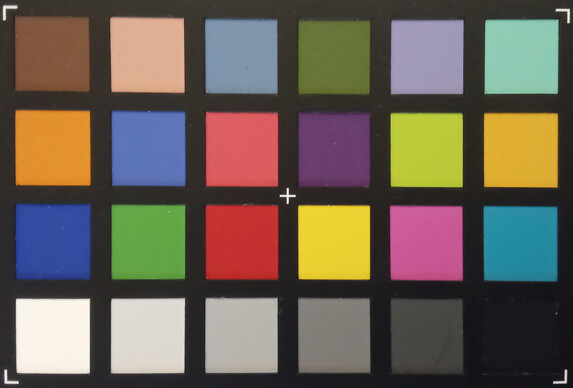

Accessories and Warranty – 24 months of warranty
The box of the Lenovo Tab doesn't include a charger, but a USB-C cable and a tool to open the microSD card slot.
At Lenovo's web shop, you can find protective cases for the tablet that also serve as a tablet stand. In addition, there is also a very robust bumper case for kids that includes a stylus for easier operation.
Lenovo offers 24 months of warranty for the Lenovo Tab.
Input Devices and Operation – No fingerprint sensor
The touchscreen of the Lenovo Tab can be operated reliably even up to the edges and corners. Since there is no separate glove mode, you have to use your bare fingers, if you want to operate the tablet outdoors on cold days.
There is also no fingerprint sensor, and there is only an option to unlock the tablet via face recognition. This is done using the front camera and succeeds quickly and fairly reliably, after you've trained the tablet once. The display brightness is mostly sufficient to ensure that the face recognition succeeds even under bad light conditions.
However, this unlocking method isn't very secure and can be manipulated. This is also the reason why Android doesn't allow using face unlock without 3D-recognition to unlock banking apps and other apps that need a high level of security. This only leaves you with having to enter a pin code or password.
Display – Good image quality
The IPS screen has a 10.1-inch diagonal and resolution of 1920x1200 pixels. In this price class, this is actually a fairly high resolution and there are quite a few displays with significantly lower resolution. The Lenovo Tab is able to display detailed images on its screen.
The maximum refresh rate is 60 Hz, so those who are used to 90 or 120 Hz from their smartphones will probably notice the difference in display responsiveness here.
We measure a maximum brightness of 433 cd/m². While this is a decent value for a tablet in this price class, there are also devices that offer almost 500 cd/m² such as the Xiaomi Redmi Pad SE 8.7.
| |||||||||||||||||||||||||
Brightness Distribution: 85 %
Center on Battery: 433 cd/m²
Contrast: 1804:1 (Black: 0.24 cd/m²)
ΔE ColorChecker Calman: 2.09 | ∀{0.5-29.43 Ø4.78}
ΔE Greyscale Calman: 2.8 | ∀{0.09-98 Ø5}
94.3% sRGB (Calman 2D)
Gamma: 2.311
CCT: 6104 K
| Lenovo Tab IPS, 1920x1200, 10.1" | Teclast M50 IPS, 1280x800, 10.1" | Cubot Tab 50 IPS, 2000x1200, 10.4" | Xiaomi Redmi Pad SE 8.7 inches IPS, 1340x800, 8.7" | Samsung Galaxy Tab A9+ TFT-LCD, 1920x1200, 11" | |
|---|---|---|---|---|---|
| Screen | -115% | -131% | -20% | -78% | |
| Brightness middle (cd/m²) | 433 | 371 -14% | 308 -29% | 499 15% | 493 14% |
| Brightness (cd/m²) | 393 | 369 -6% | 290 -26% | 479 22% | 460 17% |
| Brightness Distribution (%) | 85 | 87 2% | 90 6% | 90 6% | 90 6% |
| Black Level * (cd/m²) | 0.24 | 0.45 -88% | 0.45 -88% | 0.37 -54% | 0.35 -46% |
| Contrast (:1) | 1804 | 824 -54% | 684 -62% | 1349 -25% | 1409 -22% |
| Colorchecker dE 2000 * | 2.09 | 7.46 -257% | 8.72 -317% | 3.68 -76% | 6 -187% |
| Colorchecker dE 2000 max. * | 3.74 | 16.5 -341% | 14.17 -279% | 6.82 -82% | 11.7 -213% |
| Greyscale dE 2000 * | 2.8 | 7.4 -164% | 9.9 -254% | 1.9 32% | 8.2 -193% |
| Gamma | 2.311 95% | 2.055 107% | 2.306 95% | 2.184 101% | 2.21 100% |
| CCT | 6104 106% | 8423 77% | 9817 66% | 6787 96% | 9131 71% |
* ... smaller is better
Screen Flickering / PWM (Pulse-Width Modulation)
| Screen flickering / PWM not detected | |||
In comparison: 53 % of all tested devices do not use PWM to dim the display. If PWM was detected, an average of 8142 (minimum: 5 - maximum: 343500) Hz was measured. | |||
The display of the Lenovo Tab offers a good black value of 0.24 cd/m², which on one hand allows it to display fairly dark black color tones and on the other hand also results in a good contrast ratio, making colors appear quite vibrant.
In the Standard color mode, the color reproduction is fairly accurate with the deviations only being a bit high with yellow and red color tones.
Fortunately, we are unable to detect any PWM flickering.
Display Response Times
| ↔ Response Time Black to White | ||
|---|---|---|
| 32.5 ms ... rise ↗ and fall ↘ combined | ↗ 16.1 ms rise | |
| ↘ 16.4 ms fall | ||
| The screen shows slow response rates in our tests and will be unsatisfactory for gamers. In comparison, all tested devices range from 0.1 (minimum) to 240 (maximum) ms. » 88 % of all devices are better. This means that the measured response time is worse than the average of all tested devices (20.2 ms). | ||
| ↔ Response Time 50% Grey to 80% Grey | ||
| 51.6 ms ... rise ↗ and fall ↘ combined | ↗ 26.9 ms rise | |
| ↘ 24.7 ms fall | ||
| The screen shows slow response rates in our tests and will be unsatisfactory for gamers. In comparison, all tested devices range from 0.165 (minimum) to 636 (maximum) ms. » 88 % of all devices are better. This means that the measured response time is worse than the average of all tested devices (31.7 ms). | ||
The Lenovo Tab is only suitable for outdoor use to a limited extent: In very bright surroundings, the display is very reflective, which makes it hard to see its contents. If you take the tablet outdoors, you should preferably stay in shady places.
Due to the IPS technology, the viewing angle stability is very good. Even from very steep viewing angles, you can still see the image on the display, and there is only some minimal darkening around the edges.
Performance – The power of the entry-level class
Lenovo uses a MediaTek Helio G85 as the SoC here. It is already 5 years old but was originally used in the mid-range. Although this makes the Lenovo Tab adequately equipped for its price class in 2025, you can also get tablets that offer a significantly higher performance for only little more money.
When you surf through the system, you have to expect some stutters and wait times, particularly if some more demanding apps are running in the background.
The SoC is also suited for AI computations, delivering a mid-level performance for its price class here.
| Antutu v10 - Total Score | |
| Average of class Tablet (164396 - 3475590, n=72, last 2 years) | |
| Samsung Galaxy Tab A9+ | |
| Lenovo Tab | |
| Average Mediatek Helio G85 (274727 - 281399, n=3) | |
| CrossMark - Overall | |
| Average of class Tablet (227 - 2155, n=57, last 2 years) | |
| Samsung Galaxy Tab A9+ | |
| Lenovo Tab | |
| Xiaomi Redmi Pad SE 8.7 inches | |
| Average Mediatek Helio G85 (280 - 394, n=5) | |
| UL Procyon AI Inference for Android - Overall Score NNAPI | |
| Average of class Tablet (2597 - 76852, n=65, last 2 years) | |
| Samsung Galaxy Tab A9+ | |
| Lenovo Tab | |
| Average Mediatek Helio G85 (3849 - 5112, n=5) | |
| Xiaomi Redmi Pad SE 8.7 inches | |
| AImark - Score v3.x | |
| Average of class Tablet (138 - 55794, n=55, last 2 years) | |
| Lenovo Tab | |
| Average Mediatek Helio G85 (565 - 784, n=3) | |
| Samsung Galaxy Tab A9+ | |
The graphics computations are rather slow, causing the Lenovo Tab to have problems remaining above 30 fps even in older benchmarks. The tablet is too weak for 1440p or 4K resolutions with modern graphics.
Even with graphics computations in the native resolution of the display, you have to be content with fairly low frame rates.
Streaming of 4K videos on YouTube works without stutters, and we only see the occasional hick-up right after loading a video.
GFXBench (DX / GLBenchmark) 2.7: T-Rex Onscreen | 1920x1080 T-Rex Offscreen
GFXBench 3.0: on screen Manhattan Onscreen OGL | 1920x1080 1080p Manhattan Offscreen
GFXBench 3.1: on screen Manhattan ES 3.1 Onscreen | 1920x1080 Manhattan ES 3.1 Offscreen
GFXBench: on screen Car Chase Onscreen | 1920x1080 Car Chase Offscreen | on screen Aztec Ruins High Tier Onscreen | 2560x1440 Aztec Ruins High Tier Offscreen | on screen Aztec Ruins Normal Tier Onscreen | 1920x1080 Aztec Ruins Normal Tier Offscreen | 3840x2160 4K Aztec Ruins High Tier Offscreen
| 3DMark / Wild Life Extreme Unlimited | |
| Samsung Galaxy Tab A9+ | |
| Cubot Tab 50 | |
| Lenovo Tab | |
| Xiaomi Redmi Pad SE 8.7 inches | |
| Teclast M50 | |
| 3DMark / Wild Life Extreme | |
| Samsung Galaxy Tab A9+ | |
| Cubot Tab 50 | |
| Lenovo Tab | |
| Xiaomi Redmi Pad SE 8.7 inches | |
| Teclast M50 | |
| 3DMark / Wild Life Unlimited Score | |
| Samsung Galaxy Tab A9+ | |
| Cubot Tab 50 | |
| Lenovo Tab | |
| Xiaomi Redmi Pad SE 8.7 inches | |
| Teclast M50 | |
| 3DMark / Wild Life Score | |
| Samsung Galaxy Tab A9+ | |
| Cubot Tab 50 | |
| Lenovo Tab | |
| Xiaomi Redmi Pad SE 8.7 inches | |
| Teclast M50 | |
| 3DMark / Sling Shot Extreme (ES 3.1) Unlimited Physics | |
| Cubot Tab 50 | |
| Samsung Galaxy Tab A9+ | |
| Lenovo Tab | |
| Teclast M50 | |
| 3DMark / Sling Shot Extreme (ES 3.1) Unlimited Graphics | |
| Samsung Galaxy Tab A9+ | |
| Cubot Tab 50 | |
| Lenovo Tab | |
| Teclast M50 | |
| 3DMark / Sling Shot Extreme (ES 3.1) Unlimited | |
| Samsung Galaxy Tab A9+ | |
| Cubot Tab 50 | |
| Lenovo Tab | |
| Teclast M50 | |
| GFXBench (DX / GLBenchmark) 2.7 / T-Rex Onscreen | |
| Samsung Galaxy Tab A9+ | |
| Cubot Tab 50 | |
| Xiaomi Redmi Pad SE 8.7 inches | |
| Lenovo Tab | |
| GFXBench (DX / GLBenchmark) 2.7 / T-Rex Offscreen | |
| Samsung Galaxy Tab A9+ | |
| Cubot Tab 50 | |
| Lenovo Tab | |
| Xiaomi Redmi Pad SE 8.7 inches | |
| GFXBench 3.0 / Manhattan Onscreen OGL | |
| Samsung Galaxy Tab A9+ | |
| Xiaomi Redmi Pad SE 8.7 inches | |
| Cubot Tab 50 | |
| Lenovo Tab | |
| GFXBench 3.0 / 1080p Manhattan Offscreen | |
| Samsung Galaxy Tab A9+ | |
| Cubot Tab 50 | |
| Lenovo Tab | |
| Xiaomi Redmi Pad SE 8.7 inches | |
| GFXBench 3.1 / Manhattan ES 3.1 Onscreen | |
| Samsung Galaxy Tab A9+ | |
| Xiaomi Redmi Pad SE 8.7 inches | |
| Cubot Tab 50 | |
| Lenovo Tab | |
| GFXBench 3.1 / Manhattan ES 3.1 Offscreen | |
| Samsung Galaxy Tab A9+ | |
| Cubot Tab 50 | |
| Lenovo Tab | |
| Xiaomi Redmi Pad SE 8.7 inches | |
| GFXBench / Car Chase Onscreen | |
| Samsung Galaxy Tab A9+ | |
| Cubot Tab 50 | |
| Xiaomi Redmi Pad SE 8.7 inches | |
| Lenovo Tab | |
| GFXBench / Car Chase Offscreen | |
| Samsung Galaxy Tab A9+ | |
| Cubot Tab 50 | |
| Lenovo Tab | |
| Xiaomi Redmi Pad SE 8.7 inches | |
| GFXBench / Aztec Ruins High Tier Onscreen | |
| Samsung Galaxy Tab A9+ | |
| Cubot Tab 50 | |
| Xiaomi Redmi Pad SE 8.7 inches | |
| Teclast M50 | |
| Lenovo Tab | |
| GFXBench / Aztec Ruins High Tier Offscreen | |
| Samsung Galaxy Tab A9+ | |
| Cubot Tab 50 | |
| Lenovo Tab | |
| Xiaomi Redmi Pad SE 8.7 inches | |
| Teclast M50 | |
| GFXBench / Aztec Ruins Normal Tier Onscreen | |
| Samsung Galaxy Tab A9+ | |
| Cubot Tab 50 | |
| Teclast M50 | |
| Xiaomi Redmi Pad SE 8.7 inches | |
| Lenovo Tab | |
| GFXBench / Aztec Ruins Normal Tier Offscreen | |
| Samsung Galaxy Tab A9+ | |
| Cubot Tab 50 | |
| Lenovo Tab | |
| Xiaomi Redmi Pad SE 8.7 inches | |
| Teclast M50 | |
| GFXBench / 4K Aztec Ruins High Tier Offscreen | |
| Samsung Galaxy Tab A9+ | |
| Cubot Tab 50 | |
| Xiaomi Redmi Pad SE 8.7 inches | |
| Lenovo Tab | |
| Teclast M50 | |
When surfing the Internet, you need to bring some patience from time to time: Larger websites can take fairly long until they are fully loaded.
Even within its price class and using a modern browser, our test unit is only able to reach one of the places in the middle or back of the field in the browser benchmarks.
| Jetstream 2 - 2.0 Total Score | |
| Average of class Tablet (22.3 - 395, n=69, last 2 years) | |
| Samsung Galaxy Tab A9+ (Chrome 121.0.6167.143) | |
| Lenovo Tab (Chrome 133) | |
| Xiaomi Redmi Pad SE 8.7 inches (Chrome 131) | |
| Average Mediatek Helio G85 (29.2 - 61.3, n=8) | |
| Speedometer 2.0 - Result 2.0 | |
| Average of class Tablet (2.59 - 790, n=58, last 2 years) | |
| Samsung Galaxy Tab A9+ (Chrome 121.0.6167.143) | |
| Xiaomi Redmi Pad SE 8.7 inches (Chrome 131) | |
| Lenovo Tab (Chrome 133) | |
| Average Mediatek Helio G85 (27 - 48.6, n=7) | |
| Speedometer 3 - Score 3.0 | |
| Average of class Tablet (1.25 - 49.1, n=63, last 2 years) | |
| Average Mediatek Helio G85 (3.01 - 3.81, n=3) | |
| Xiaomi Redmi Pad SE 8.7 inches (Chrome 131) | |
| Lenovo Tab (Chrome 133) | |
| WebXPRT 4 - Overall | |
| Average of class Tablet (26 - 376, n=74, last 2 years) | |
| Samsung Galaxy Tab A9+ (Chrome 121.0.6167.143) | |
| Xiaomi Redmi Pad SE 8.7 inches (Chrome 131) | |
| Lenovo Tab (Chrome 133) | |
| Average Mediatek Helio G85 (51 - 62, n=4) | |
| Octane V2 - Total Score | |
| Average of class Tablet (763 - 138481, n=98, last 2 years) | |
| Samsung Galaxy Tab A9+ (Chrome 121.0.6167.143) | |
| Cubot Tab 50 (Chrome 122) | |
| Lenovo Tab (Chrome 133) | |
| Xiaomi Redmi Pad SE 8.7 inches (Chrome 131) | |
| Average Mediatek Helio G85 (10299 - 16763, n=16) | |
| Teclast M50 (Chrome 122) | |
| Mozilla Kraken 1.1 - Total | |
| Average Mediatek Helio G85 (2486 - 3939, n=9) | |
| Xiaomi Redmi Pad SE 8.7 inches (Chrome 131) | |
| Lenovo Tab (Chrome 133) | |
| Average of class Tablet (243 - 27101, n=83, last 2 years) | |
| Samsung Galaxy Tab A9+ (Chrome 121.0.6167.143) | |
* ... smaller is better
Slow eMMC flash has to be sufficient as storage of the Lenovo Tab, and other tablets such as the Cubot Tab 50 show that you can get more modern storage even in this price class.
This means that you have to expect some longer load times and rather slow results when transferring files.
| Lenovo Tab | Teclast M50 | Cubot Tab 50 | Xiaomi Redmi Pad SE 8.7 inches | Samsung Galaxy Tab A9+ | Average 64 GB eMMC Flash | Average of class Tablet | |
|---|---|---|---|---|---|---|---|
| AndroBench 3-5 | -28% | 114% | -15% | 55% | -38% | 293% | |
| Sequential Read 256KB (MB/s) | 294 | 269.9 -8% | 976.4 232% | 289 -2% | 485.96 65% | 277 ? -6% | 1739 ? 491% |
| Sequential Write 256KB (MB/s) | 255.3 | 196 -23% | 374 46% | 263.6 3% | 476.37 87% | 178.4 ? -30% | 1295 ? 407% |
| Random Read 4KB (MB/s) | 119.5 | 69.6 -42% | 183.3 53% | 71.1 -41% | 130.67 9% | 60.7 ? -49% | 243 ? 103% |
| Random Write 4KB (MB/s) | 102 | 62.3 -39% | 228.4 124% | 82.7 -19% | 162.9 60% | 33.8 ? -67% | 276 ? 171% |
Games – Gaming on the Lenovo Tab
You can only really get into gaming with the Lenovo Tab if you lower your expectations: While simple casual games can run smoothly even on the affordable tablet, demanding games such as Genshin Impact or PUBG Mobile only run at 30 fps, even in low settings. And even then, smooth rendering isn't always a given and there are also some drops. We test the frame rates with the software from GameBench.
The touchscreen is well-suited for gaming operation, and the position sensor also works reliably in games such as Temple Run and Subway Surfers.
Emissions – Hardly any heat development or throttling
Temperatures
Under longer load, we measure a maximum temperature of 33.5 °C (92.3 °F) on the case of the tablet. While this is just barely noticeable, it is by no means critical. So we can give high marks to the temperature management of the tablet.
This is also noticeable in the stress tests of 3DMark: Even after 20 runs of the same benchmark, the performance capabilities of the SoC only drops minimally at most.
(+) The maximum temperature on the upper side is 33.5 °C / 92 F, compared to the average of 33.7 °C / 93 F, ranging from 20.7 to 53.2 °C for the class Tablet.
(+) The bottom heats up to a maximum of 33.5 °C / 92 F, compared to the average of 33.2 °C / 92 F
(+) In idle usage, the average temperature for the upper side is 24 °C / 75 F, compared to the device average of 30 °C / 86 F.
3DMark Steel Nomad Stress Test
| 3DMark | |
| Wild Life Stress Test Stability | |
| Samsung Galaxy Tab A9+ | |
| Xiaomi Redmi Pad SE 8.7 inches | |
| Teclast M50 | |
| Lenovo Tab | |
| Cubot Tab 50 | |
| Wild Life Extreme Stress Test | |
| Cubot Tab 50 | |
| Samsung Galaxy Tab A9+ | |
| Xiaomi Redmi Pad SE 8.7 inches | |
| Lenovo Tab | |
| Teclast M50 | |
Speakers
The two speakers of the Lenovo Tab are placed on the side edges of the tablet, allowing for some light stereo effects when holding the tablet in landscape mode.
The maximum volume is sufficient for listening in a small or medium-size room, and the sound is actually quite decent, particularly when considering the price of the tablet. Although the sound spectrum hardly contains any real bass or even low mids, the rest is balanced without the highs being overemphasized. So listening to Pop music can be enjoyable with the tablet.
For watching movies or serials, some users would probably want an even more powerful sound. To get that, you can connect speakers or headphones via the 3.5mm audio port or wirelessly via Bluetooth. Both methods work without any problems. For a Bluetooth connection both devices have to support the right audio codecs. The Lenovo Tab supports the most important standards in this regard and is even able to score with Hi-Res codecs such as LDAC or aptX HD.
Lenovo Tab audio analysis
(+) | speakers can play relatively loud (83.3 dB)
Bass 100 - 315 Hz
(-) | nearly no bass - on average 25.4% lower than median
(±) | linearity of bass is average (10.5% delta to prev. frequency)
Mids 400 - 2000 Hz
(±) | reduced mids - on average 5.8% lower than median
(+) | mids are linear (6.9% delta to prev. frequency)
Highs 2 - 16 kHz
(+) | balanced highs - only 3.1% away from median
(+) | highs are linear (3.1% delta to prev. frequency)
Overall 100 - 16.000 Hz
(±) | linearity of overall sound is average (21.4% difference to median)
Compared to same class
» 64% of all tested devices in this class were better, 6% similar, 30% worse
» The best had a delta of 7%, average was 21%, worst was 129%
Compared to all devices tested
» 59% of all tested devices were better, 7% similar, 34% worse
» The best had a delta of 4%, average was 24%, worst was 134%
Samsung Galaxy Tab A9+ audio analysis
(+) | speakers can play relatively loud (89.3 dB)
Bass 100 - 315 Hz
(-) | nearly no bass - on average 22.4% lower than median
(±) | linearity of bass is average (10% delta to prev. frequency)
Mids 400 - 2000 Hz
(±) | higher mids - on average 5.7% higher than median
(+) | mids are linear (5.8% delta to prev. frequency)
Highs 2 - 16 kHz
(+) | balanced highs - only 2.4% away from median
(+) | highs are linear (3.7% delta to prev. frequency)
Overall 100 - 16.000 Hz
(±) | linearity of overall sound is average (15.5% difference to median)
Compared to same class
» 36% of all tested devices in this class were better, 3% similar, 61% worse
» The best had a delta of 7%, average was 21%, worst was 129%
Compared to all devices tested
» 22% of all tested devices were better, 4% similar, 74% worse
» The best had a delta of 4%, average was 24%, worst was 134%
Battery Life – It could be longer
Power Consumption
In terms of its minimum power consumption, the Lenovo Tab isn't particularly efficient, drawing 1.7 watts from the battery. The rest of the consumption values are at an average level, resulting in an overall consumption that isn't too high at a maximum of 7.2 watts.
The tablet can be charged at a maximum of 15 watts, but a corresponding charger is not included. The Lenovo Tab was able to use all the chargers we tested without any problems. It takes about 1:45 hours to completely recharge the tablet.
| Off / Standby | |
| Idle | |
| Load |
|
Key:
min: | |
| Lenovo Tab 5100 mAh | Xiaomi Redmi Pad SE 8.7 inches 6650 mAh | Samsung Galaxy Tab A9+ 7040 mAh | Average Mediatek Helio G85 | Average of class Tablet | |
|---|---|---|---|---|---|
| Power Consumption | 27% | -75% | 10% | -82% | |
| Idle Minimum * (Watt) | 1.7 | 0.9 47% | 1 41% | 1.171 ? 31% | 2.03 ? -19% |
| Idle Average * (Watt) | 1.9 | 1.2 37% | 4.76 -151% | 1.719 ? 10% | 3.97 ? -109% |
| Idle Maximum * (Watt) | 2.2 | 1.7 23% | 4.79 -118% | 2.18 ? 1% | 4.32 ? -96% |
| Load Average * (Watt) | 4.6 | 3.5 24% | 9.52 -107% | 4.35 ? 5% | 9.22 ? -100% |
| Load Maximum * (Watt) | 7.2 | 6.9 4% | 9.92 -38% | 7.06 ? 2% | 13.3 ? -85% |
* ... smaller is better
Power Consumption: Geekbench (150 cd/m²)
Power Consumption: GFXbench (150 cd/m²)
Battery Life
Once the 5,100-mAh capacity battery is fully charged, you can use the Lenovo Tab for up to 11:45 hours surfing in the WLAN or 12:39 hours watching movies from the internal storage.
While this should be sufficient for a regular day away from the outlet, there are also other tablets such as the Xiaomi Redmi Pad SE 8.7 that last significantly longer. The relatively small battery of the Lenovo Tab becomes noticeable here.
| Lenovo Tab 5100 mAh | Teclast M50 6000 mAh | Cubot Tab 50 7500 mAh | Xiaomi Redmi Pad SE 8.7 inches 6650 mAh | Samsung Galaxy Tab A9+ 7040 mAh | |
|---|---|---|---|---|---|
| Battery runtime | 5% | 19% | 45% | 14% | |
| Reader / Idle (h) | 32.5 | 37.3 15% | 37.9 17% | ||
| H.264 (h) | 12.7 | 21.1 66% | 13.3 5% | ||
| WiFi v1.3 (h) | 11.8 | 12.4 5% | 14.1 19% | 20.4 73% | 15.3 30% |
| Load (h) | 4 | 5 25% | 4.1 3% |
Notebookcheck Overall Evaluation
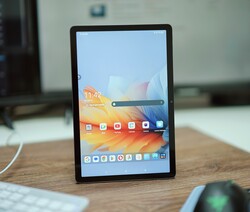
The Lenovo Tab is an affordable tablet with a compact size, a display with a relatively high resolution, and sufficient performance as long as you reduce your demands. We particularly like the speakers and the capability to locate its position via satellite.
On the other hand, the fairly small battery won't allow for a very long battery life, and you shouldn't expect many software updates.
Lenovo Tab
- 02/15/2025 v8
Florian Schmitt
Transparency
The selection of devices to be reviewed is made by our editorial team. The test sample was provided to the author as a loan by the manufacturer or retailer for the purpose of this review. The lender had no influence on this review, nor did the manufacturer receive a copy of this review before publication. There was no obligation to publish this review. As an independent media company, Notebookcheck is not subjected to the authority of manufacturers, retailers or publishers.
This is how Notebookcheck is testing
Every year, Notebookcheck independently reviews hundreds of laptops and smartphones using standardized procedures to ensure that all results are comparable. We have continuously developed our test methods for around 20 years and set industry standards in the process. In our test labs, high-quality measuring equipment is utilized by experienced technicians and editors. These tests involve a multi-stage validation process. Our complex rating system is based on hundreds of well-founded measurements and benchmarks, which maintains objectivity. Further information on our test methods can be found here.







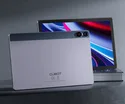


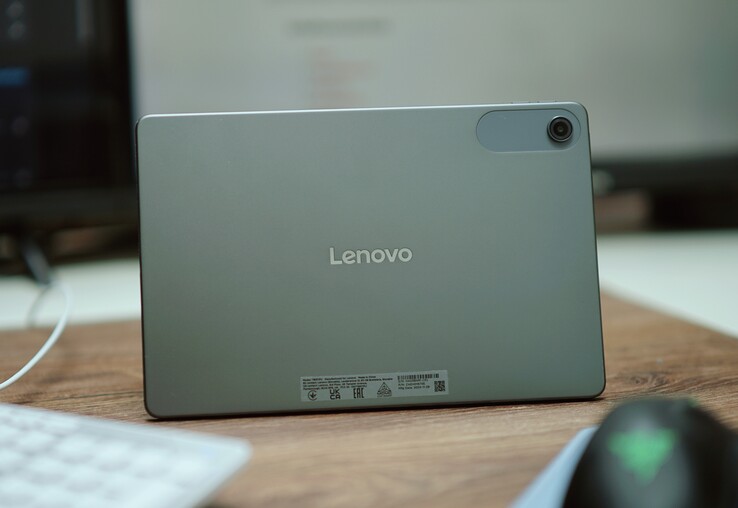








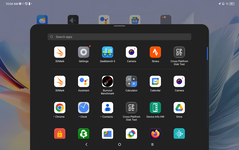
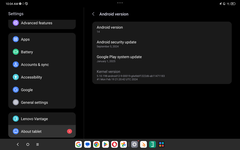
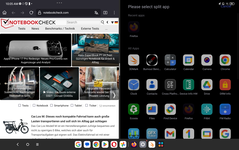
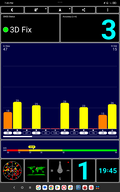
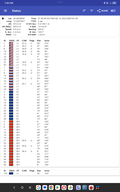
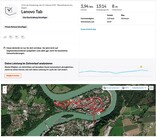
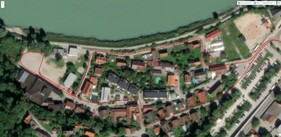
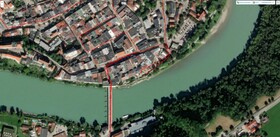
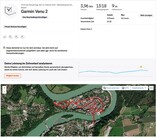
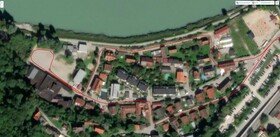
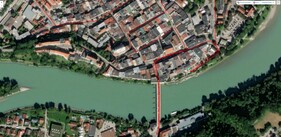






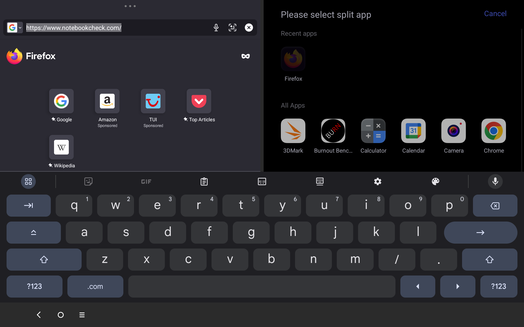
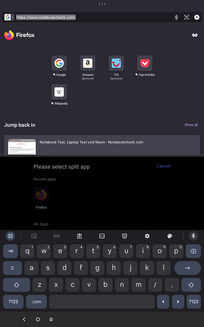
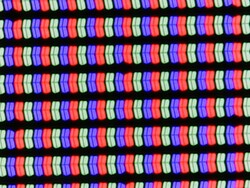
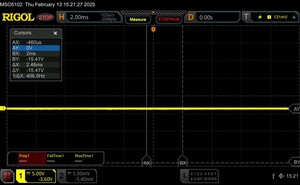

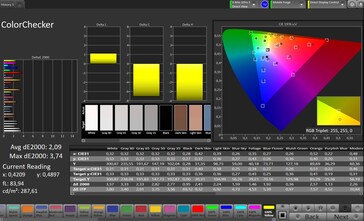
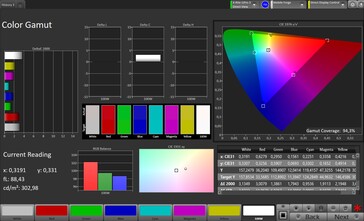
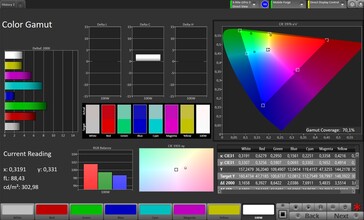
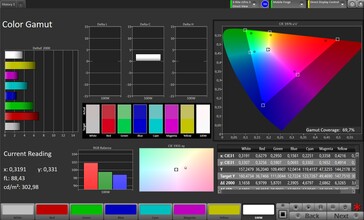
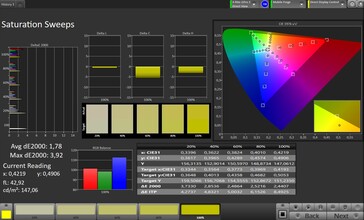
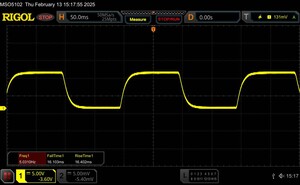



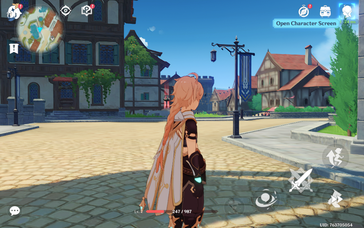
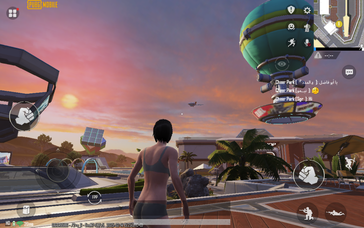
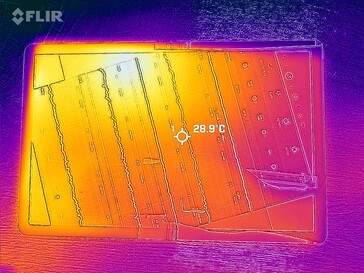
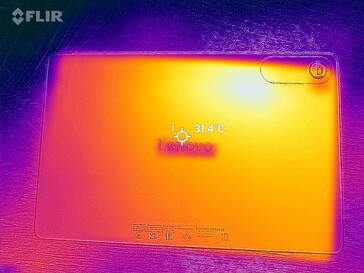
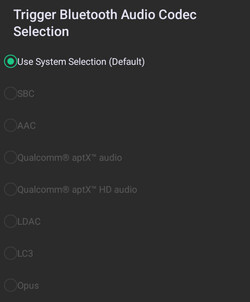
 Total Sustainability Score:
Total Sustainability Score: 